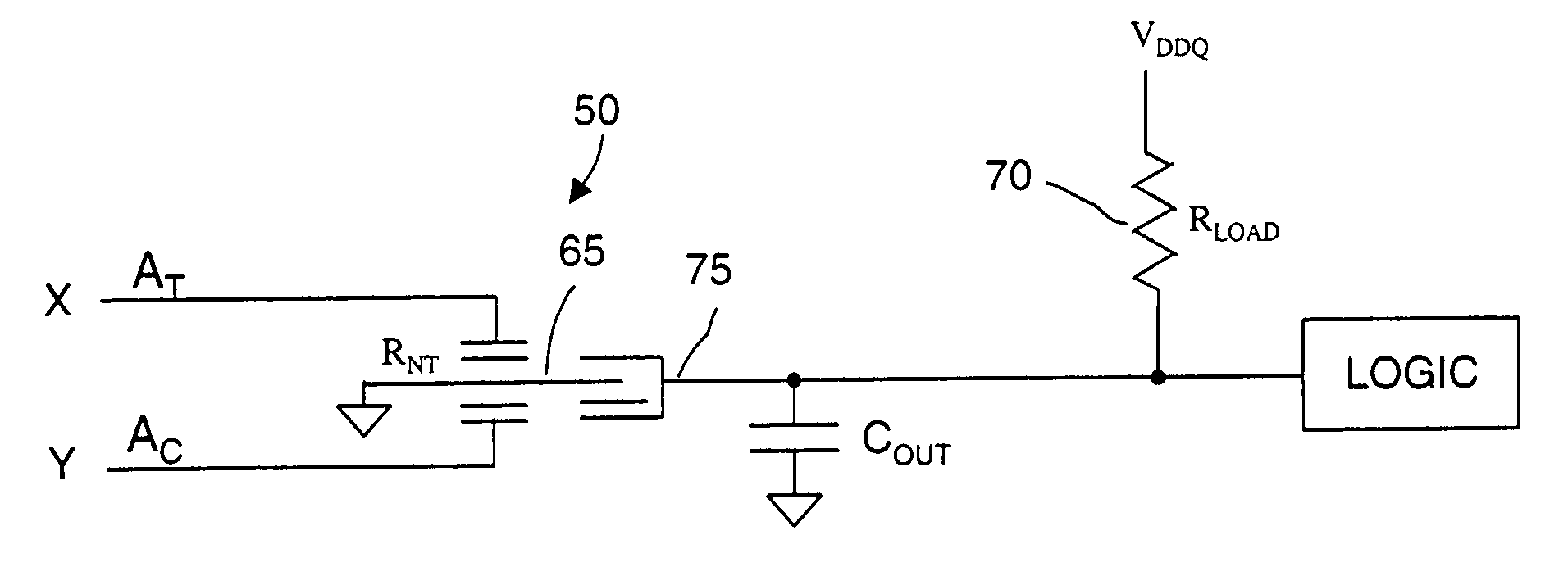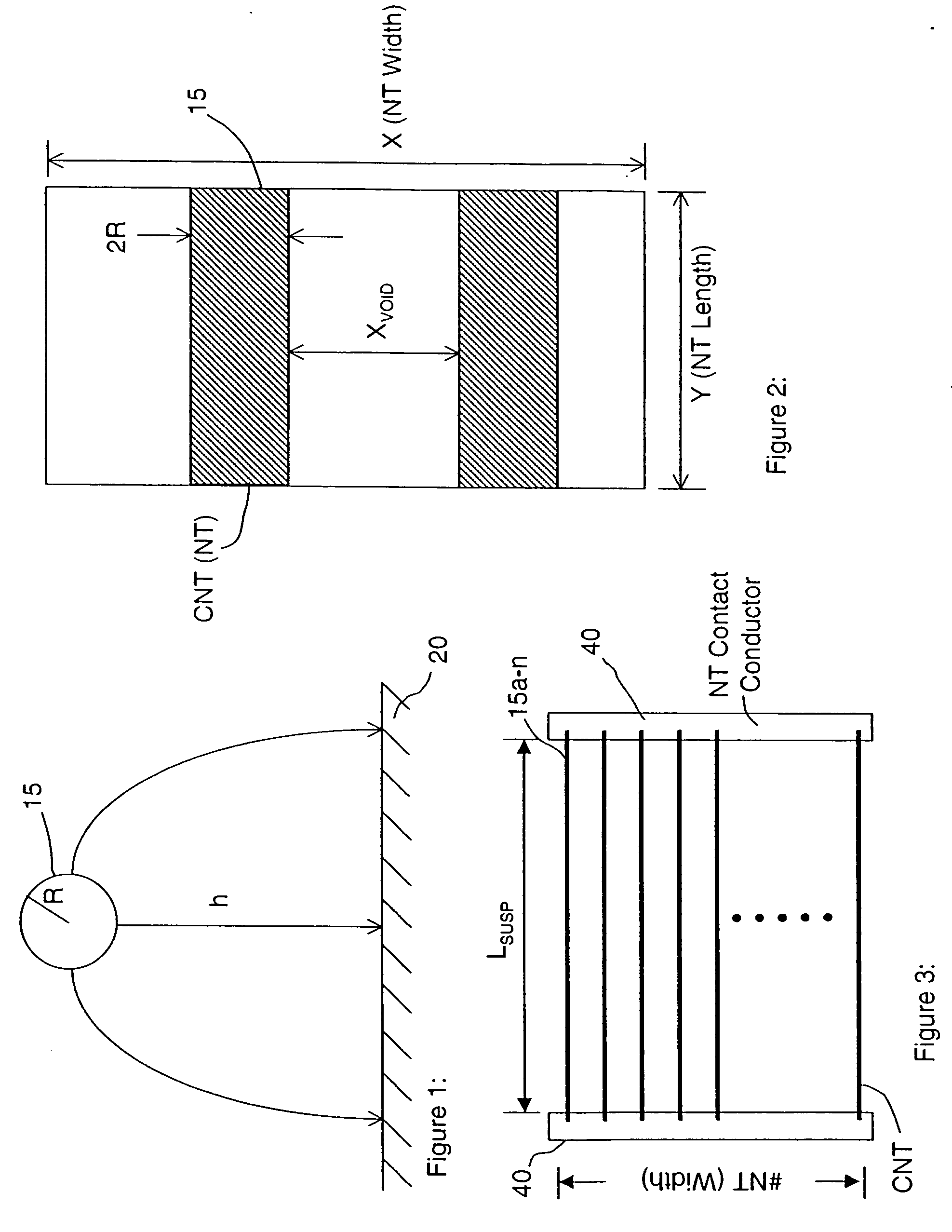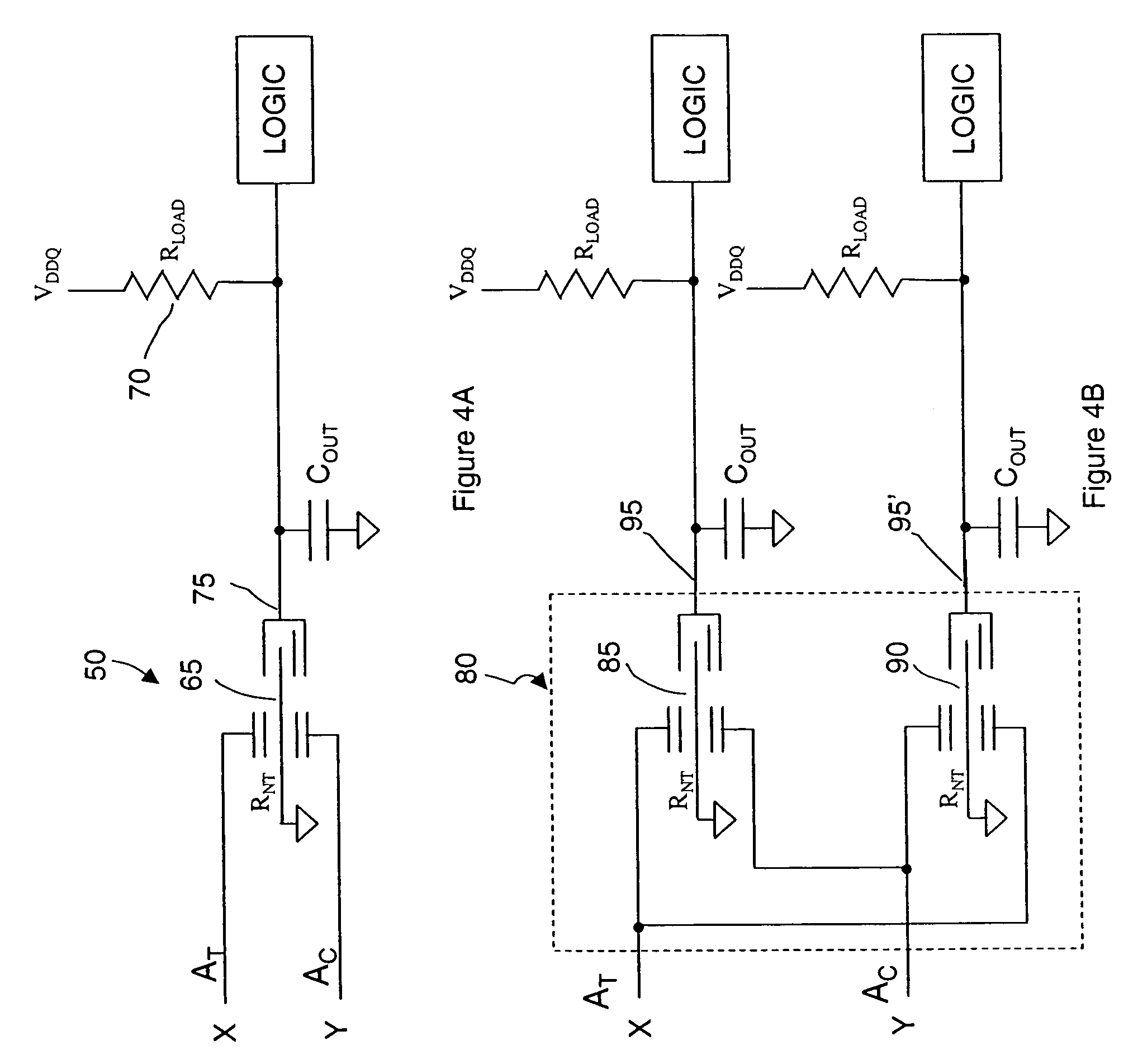Nanotube-based logic driver circuits
a logic driver and nanotube technology, applied in logic circuit coupling/interface arrangement, pulse technique, instruments, etc., can solve the problems of high power consumption, density and operation speed of mos digital circuits, and limited density of bipolar digital integrated circuits
- Summary
- Abstract
- Description
- Claims
- Application Information
AI Technical Summary
Benefits of technology
Problems solved by technology
Method used
Image
Examples
Embodiment Construction
[0048] Preferred embodiments of the invention arrange nanotube-based switches into driver circuits capable of driving relatively large capacitances, such as off chip (OC) capacitances, long or heavily loaded interconnect lines, etc. The circuits may be either dual-rail (differential) or single-rail, open carbon nanotube (CNT) output (corresponds to open drain in an FET), push pull drivers, and tristate push pull drivers, for example.
[0049] Carbon nanotube-based logic circuits, such as those circuits disclosed in the incorporated, related references, may be required to drive a relatively large capacitance, 10 pf for example, when driving off-chip, or when driving heavy loads on-chip. Nanotube-based logic circuits using porous carbon nanotube fabrics to construct nanotube channel elements are typically low capacitance circuits, e.g., 30 aF (0.030 fF) input and output capacitances, and can typically drive only relatively low capacitances. Preferably, a logic family includes circuits t...
PUM
 Login to View More
Login to View More Abstract
Description
Claims
Application Information
 Login to View More
Login to View More - R&D
- Intellectual Property
- Life Sciences
- Materials
- Tech Scout
- Unparalleled Data Quality
- Higher Quality Content
- 60% Fewer Hallucinations
Browse by: Latest US Patents, China's latest patents, Technical Efficacy Thesaurus, Application Domain, Technology Topic, Popular Technical Reports.
© 2025 PatSnap. All rights reserved.Legal|Privacy policy|Modern Slavery Act Transparency Statement|Sitemap|About US| Contact US: help@patsnap.com



